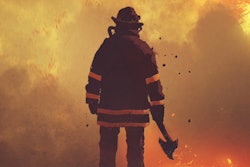A steady increase in the volume of coronary CT angiography (CCTA) exams is occurring, especially at mid- to high-level community hospitals across the country. In fact, a review 3DR Labs conducted in August showed a 44% increase in CCTA cases over 12 months.
The growth began shortly after the American College of Cardiology (ACC)/American Heart Association's (AHA) committee on clinical practice guidelines issued its Guideline for the Evaluation and Diagnosis of Chest Pain in October 2021. The guideline recommended CCTA as a first-line tool for both emergent and non-emergent evaluation of chest pain, and it worked to persuade third-party payors to cover it.
In many ways, the growth in CCTA exams mirrors that seen with transcatheter aortic valve replacement (TAVR) procedures. With TAVR, there was an initial steady pick up as early adopters learned how to work up those cases. Then within a few years, that market exploded, producing a huge volume of cases. TAVR is now the method of choice for aortic valve replacement, and patients undergo the procedure unless it is contraindicated for some reason.
Performing CCTA imaging
CCTA is a complex exam. It is imperative that radiologic technologists obtain accurate data and the right bolus timing simultaneously. The test requires good patient cooperation because image acquisition is fast; if for some reason the patient is moving or not holding their breath, the scan quality can be significantly degraded. The radiologic technologist must also obtain gated images: If the patient’s heartbeat is irregular or too fast, a nurse may need to administer beta blockers to slow the heart rate down.
Then, once the radiologic technologist has acquired the needed CT slices, they must create images that are clinically useful by running them through software programs in a 3D lab to visualize coronary arteries. This process requires an advanced skillset – which means there's often a steep learning curve for everyone involved.
Furthermore, the entire process often occurs in an urgent care environment, as there is a patient waiting in the ER with chest pain. It is incumbent upon the technologist to obtain good images, extract all the information possible out of them, and deliver those results quickly, so the ER staff can decide whether to take that patient to the cath lab.
Compounding the issue, those cases arrive 24 hours a day, not just during business hours. The radiology department must be able to post-process the images, edit them, and make them diagnostically useful at all hours of the day and night. Right now, radiology departments aren't necessarily prepared to do that, since most third-shift CT imaging technologists are either working alone or on a skeleton crew. Even during the day, the number of technologists in a typical department that can provide high-quality CCTA imaging is relatively small.
Currently, hospitals are admitting patients with chest pain for 23 hours and performing cardiac nuclear studies, a treadmill test, and possibly other tests to evaluate the cause of the chest pain. But it costs significantly less to do a CCTA exam. If staff choose the right subgroup of patients to examine with CCTA imaging, they can save their hospital, healthcare system, and insurance companies a lot of money.
Appropriate candidates for this procedure are patients with a low- to intermediate- probability of significant coronary artery disease (for example, a 45- to 55-year-old patient who presents with atypical chest pain). If the CCTA exam is negative, the patient can be sent home and treated as an outpatient.
Managing a growing caseload
Once healthcare systems and payors stop paying for old-fashioned cardiac workups, the volume of CCTA exams will increase. Selected screening of high-risk populations using CCTA imaging will enable early prevention of coronary artery disease by encouraging people to adopt lifestyle and dietary changes to reduce their risk. These advances will increase the number of CCTA exams in both outpatient and emergency room settings, amplifying the need for 24/7 reviews.
A key factor blocking the adoption of CCTA imaging is the shortage of trained medical staff. As demand for this procedure continues to rise, outsourcing CCTA images for postprocessing and interpretation may offer a practical, efficient, and cost-effective solution.
Robert Falk, MD, is founder and chief medical officer of radiology image-processing firm 3DR Labs, and Stephanie Hosbrook is director of operations. The comments and observations expressed are those of the author and do not necessarily reflect the opinions of AuntMinnie.com.




















